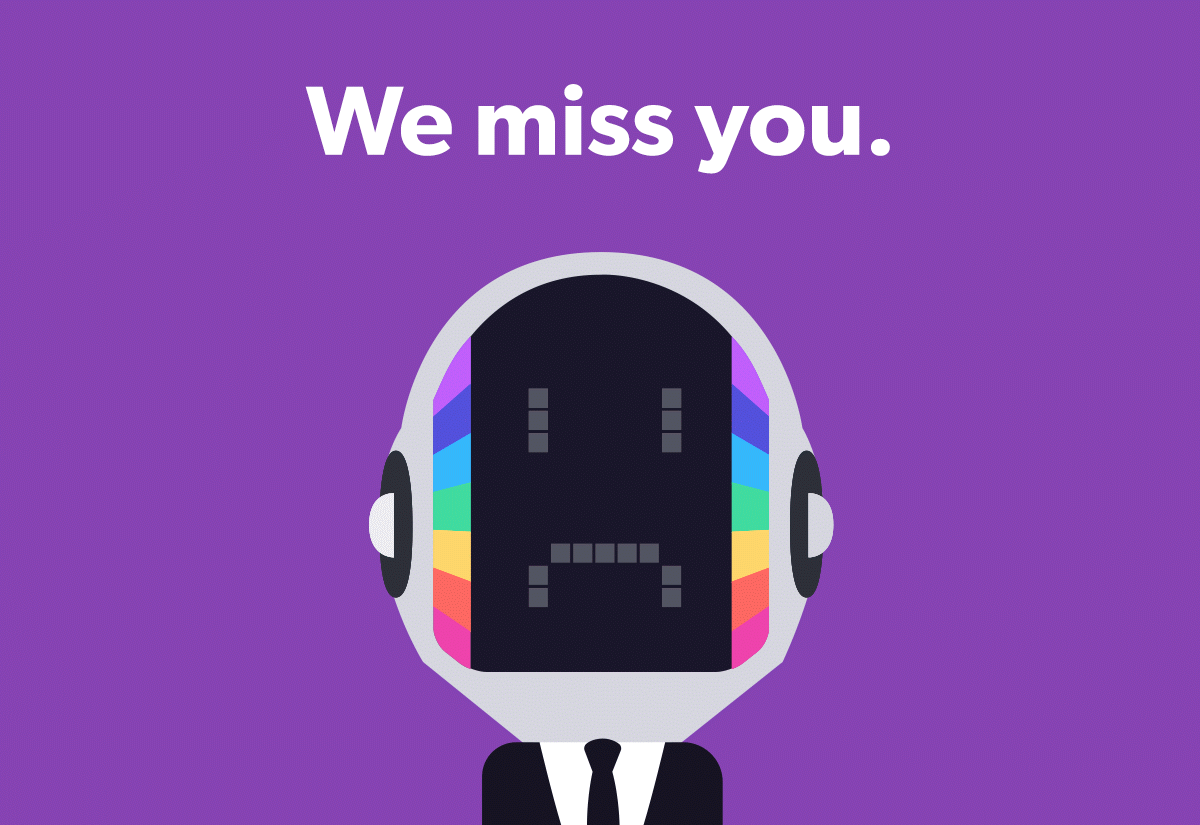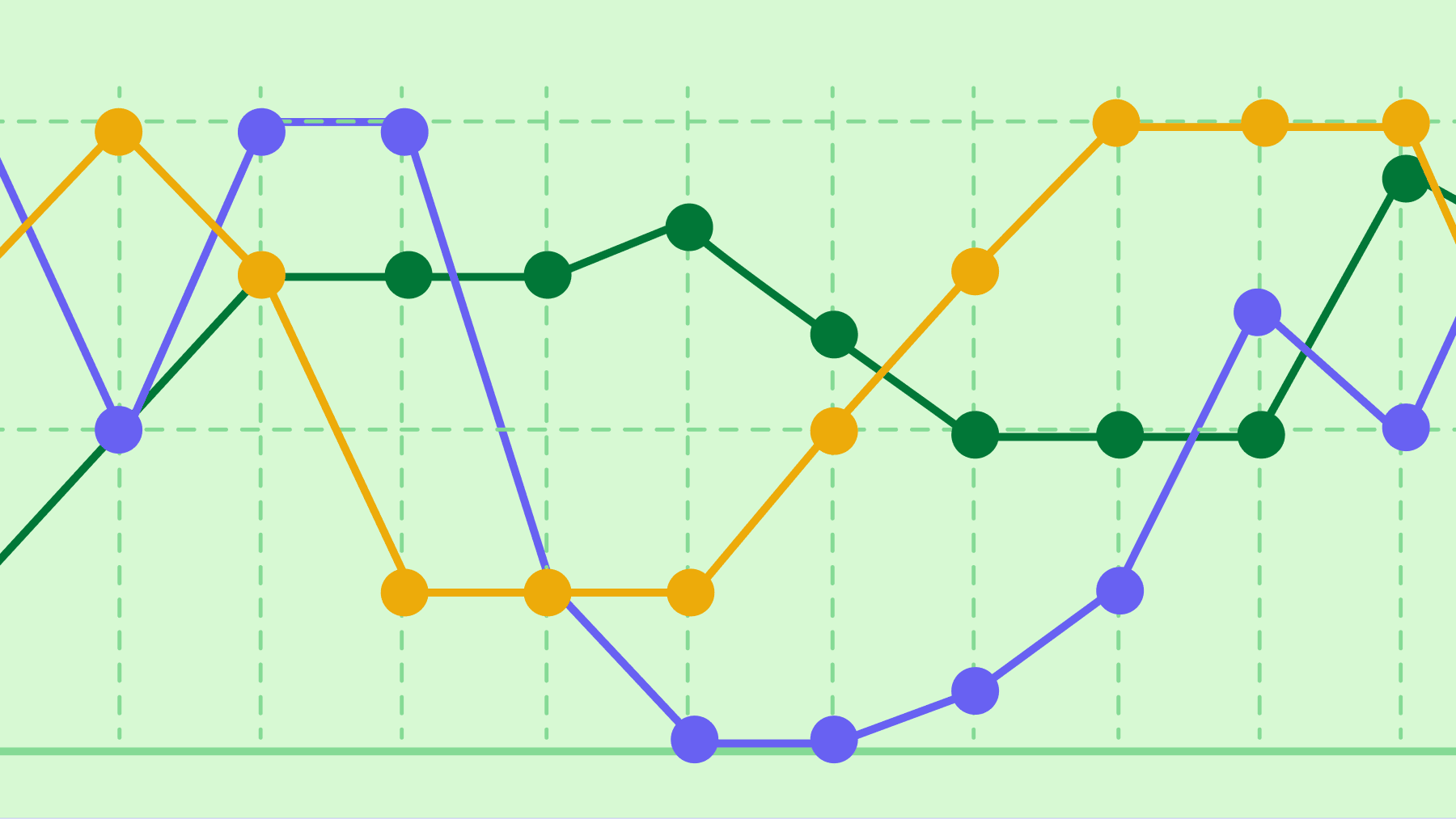A re-engagement email campaign is an email series that you send to a segment of your audience who are less engaged (or completely unengaged) with your emails. These types of emails are also called win-back emails or reactivation emails.
Re-engagement emails help you identify and follow up with inactive users not engaging with your email newsletters to either…
Win them back (inspire them to open emails regularly)
Let them go (to maintain a healthy subscriber list)
Keeping an engaged audience helps you improve your open rates, click-through rates, customer retention, ROI and email deliverability rate.
That’s because active subscribers improve your sender reputation, which means Internet Service Providers (ISPs) will deliver your emails to their inbox rather than the spam folder.
In this article we cover what reengagement emails are, before providing you with nine fantastic customer re-engagement email examples that you can take inspiration from.
What are re-engagement emails?
Re-engagement emails empower you to remind people why they subscribed to your emails in the first place. In a re-engagement campaign, you can tell them about new products, new features and that you simply miss them.
Re-engagement emails also give you an opportunity to ask subscribers what they’re most interested in hearing about, so you can send them relevant emails they’re more likely to engage with.
Not all of your disengaged or dormant email subscribers are lost causes and there are plenty of ways to win them back (which we’ll get into in a moment). After you’ve designed your re-engagement email sequences, use A/B testing to find out which subject lines and send times work best and optimize accordingly.
Key takeaways from this re-engagement emails article
What’s in the article: The article explains the importance of re-engagement emails and provides nine effective examples to help businesses win back inactive subscribers and improve email engagement metrics.
How re-engagement helps: Re-engagement emails remind subscribers why they signed up, highlight new offerings and tailor content to their interests, ultimately boosting open rates, click-through rates and overall ROI.
How Pipedrive offers a solution: Pipedrive can help automate and personalize re-engagement email campaigns, track subscriber interactions and optimize email marketing strategies to re-engage inactive users effectively. Try Pipedrive free for 14 days.
9 killer customer re-engagement email examples
Below are nine re-engagement email templates, each with a unique approach to encouraging subscribers to start opening and clicking through again.
Take inspiration from them and turn your good emails into great ones.
1. Old Navy


Who doesn’t like freebies? Especially on your birthday!
Old Navy uses a clever approach by speaking to the reader as an old friend would.
The goal of this email is to gather relevant data about the subscriber, while a freebie is great bait to nudge the reader into updating their preferences and information.
2. Urban Outfitters

Knowing your target audience is key to an effective email marketing strategy and Urban Outfitters is a company that knows who their target audience is and how to communicate with them.
The text message format of this re-engagement email relates to the demographic they are targeting in their marketing emails.
It’s a fun and humorous approach which encourages inactive customers to continue reading because it fits with their preferred communication method.
3. Boden

Boden also plays on the relationship they have with their readers. They combine the heartache of a break-up with something pragmatic like a sale promotion.
It’s a simple and well-crafted email. First, they pique your interest and then they gently guide you towards their sales. Since they already have your attention, you’re more likely to get FOMO (fear of missing out) and think, “Hey, why not check out the discounts”. Also, notice they have clear links to all of their social media channels, offering another way to re-engage.
Furthermore, personalized email subject lines have 29% higher open rates and 41% higher click-through rates according to Experian, so you should consider ways to include personalization as part of your marketing strategy.
4. Design Within Reach

Discounts, free shipping or other incentives are proven ways to encourage your subscribers to return to your site and check out your products or services again. It piques their interest and invites them to browse your site.
Design Without Reach are combining two things customers really love: a sale and getting something for free.
5. Warby Parker

Another re-engagement approach could be to introduce your subscribers to something new.
Warby Parker sends out this email to inform people of their new collection. In doing so, they are tapping into curiosity while playing up exclusivity.
A phrase like “It just arrived” says that not many people have seen the new collection and the email recipient can potentially be one of the first to own a pair.
6. Death Wish Coffee

If collecting points and bonuses is part of your business strategy, adding more points to your customer’s account can be a great re-engagement strategy.
Death Wish Coffee uses this approach, putting extra points into your account so you can save money on your next purchase. Points or other loyalty programs are a clever way to not only re-engage dormant subscribers, but also to turn them into repeat customers.
When using points or other loyalty programs to encourage your customers, you need to communicate clearly what the benefits for the customers are in the long run so they’ll want to opt-in for your offer.
7. Help Scout

Have you ever signed up for a free trial because you thought the tool was interesting and relevant to you, but been so busy that you either forgot or didn’t have time to try it out?
HelpScout knows that many people end up in this situation, so to win back some of their customers they offer an extended free trial period using a bold and clear call-to-action (CTA).
Relating to the issues and obstacles your target audience faces will enable you to offer the right incentive and win back some of your dormant subscribers.
8. Ticketfly

A picture says a thousand words and this email shows that sometimes you don’t have to use a lot of fancy words to convey your message.
Ticketfly uses an animated GIF and the simple words “we miss you” to show their readers how much they mean to them. It doesn’t necessarily need to be an animated GIF; a simple stock image will do the trick if it’s paired with a clever message.
9. GoPro

This can’t be emphasized enough: you need to research your audience, learn about their needs and preferences, what they like and how they talk.
Personalization is key when trying to engage your email subscribers. If you’re just guessing, all your personalized emails and efforts will be a complete waste of time.
This example from GoPro shows that they know many of their users are active and adventurous, so they use the same lingo as their target audience.
Final thoughts
People unsubscribe or fall out of your email lists all the time. Luckily, there’s something we can do about it.
Do some research to get to know your audience and try to figure out why they opted in in the first place.
When you know your audience, you can better relate to the problems and obstacles they’re facing. You know their needs and preferences, and how they communicate. Translate all these findings into relevant content for your emails and subject lines and go win back those subscribers.
In truth, a quarter of your email list still opt-out annually, and sometimes people just won’t open emails for a period of time. This isn’t necessarily a bad thing, given that disengaged subscribers could hurt your overall email engagement rates.
While these examples are more suited towards B2C companies, with a little bit of tweaking they can just as well serve as B2B re-engagement email examples.
The most important thing is to know who you’re speaking to and reward your subscribers’ interest.





